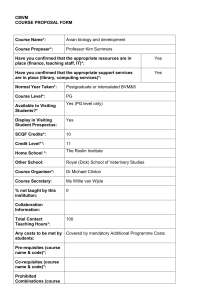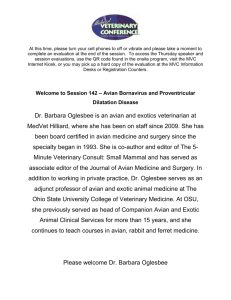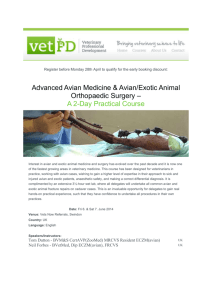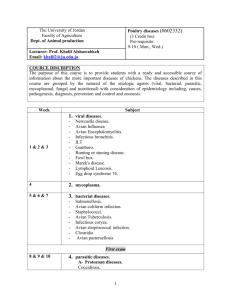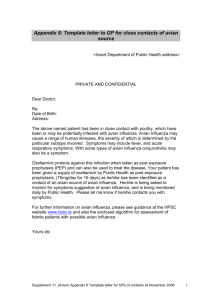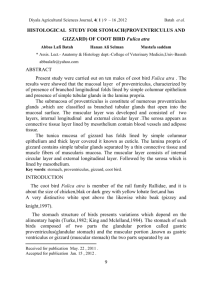Avian Encephalomyelitis (Epidemic tremor) Avian encephalomyelitis
advertisement
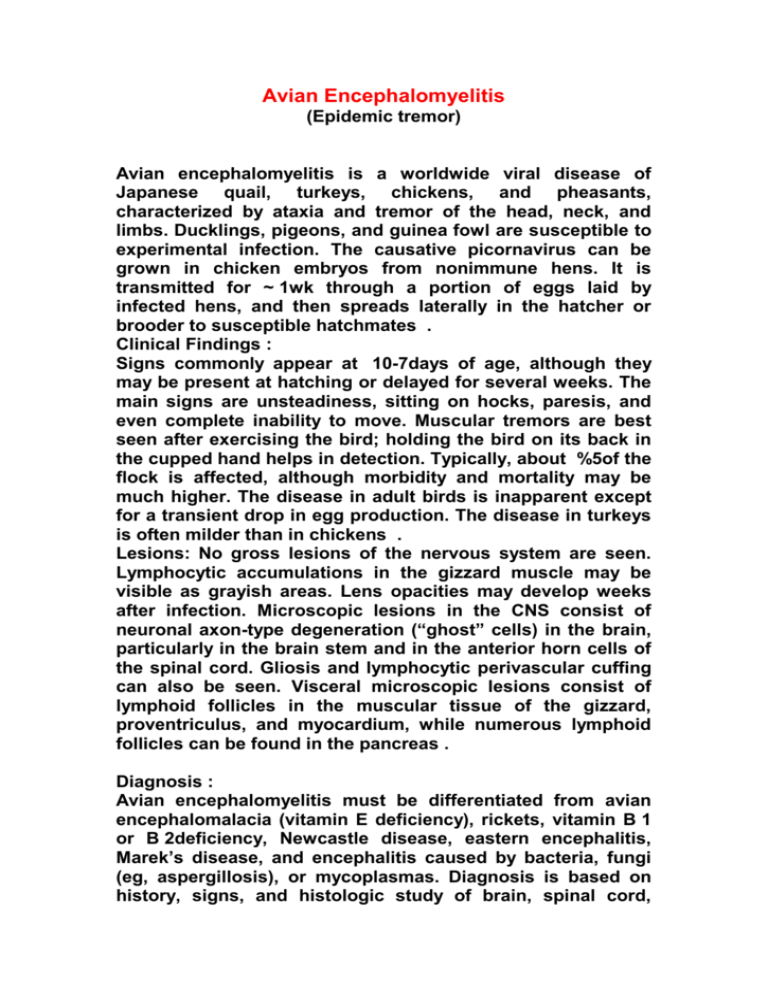
Avian Encephalomyelitis (Epidemic tremor) Avian encephalomyelitis is a worldwide viral disease of Japanese quail, turkeys, chickens, and pheasants, characterized by ataxia and tremor of the head, neck, and limbs. Ducklings, pigeons, and guinea fowl are susceptible to experimental infection. The causative picornavirus can be grown in chicken embryos from nonimmune hens. It is transmitted for ~ 1wk through a portion of eggs laid by infected hens, and then spreads laterally in the hatcher or brooder to susceptible hatchmates . Clinical Findings : Signs commonly appear at 11-7days of age, although they may be present at hatching or delayed for several weeks. The main signs are unsteadiness, sitting on hocks, paresis, and even complete inability to move. Muscular tremors are best seen after exercising the bird; holding the bird on its back in the cupped hand helps in detection. Typically, about %5of the flock is affected, although morbidity and mortality may be much higher. The disease in adult birds is inapparent except for a transient drop in egg production. The disease in turkeys is often milder than in chickens . Lesions: No gross lesions of the nervous system are seen. Lymphocytic accumulations in the gizzard muscle may be visible as grayish areas. Lens opacities may develop weeks after infection. Microscopic lesions in the CNS consist of neuronal axon-type degeneration (“ghost” cells) in the brain, particularly in the brain stem and in the anterior horn cells of the spinal cord. Gliosis and lymphocytic perivascular cuffing can also be seen. Visceral microscopic lesions consist of lymphoid follicles in the muscular tissue of the gizzard, proventriculus, and myocardium, while numerous lymphoid follicles can be found in the pancreas . Diagnosis : Avian encephalomyelitis must be differentiated from avian encephalomalacia (vitamin E deficiency), rickets, vitamin B 1 or B 2deficiency, Newcastle disease, eastern encephalitis, Marek’s disease, and encephalitis caused by bacteria, fungi (eg, aspergillosis), or mycoplasmas. Diagnosis is based on history, signs, and histologic study of brain, spinal cord, proventriculus, gizzard, and pancreas. Virus isolation in eggs free of avian encephalomyelitis antibody is sometimes necessary for confirmation. Serologic testing of paired samples is helpful, using virus neutralization or ELISA tests. Microscopic lesions are sparse and may not be found in infected adults . Prevention and Treatment : Immunization of breeder pullets 15-11wk old with a commercial live vaccine is advised to prevent vertical transmission of the virus to progeny and to provide them with maternal immunity against the disease. Vaccination of tableegg flocks is also advisable to prevent a temporary drop in egg production. Affected chicks and poults are ordinarily destroyed because few recover. A combination vaccine for fowlpox and avian encephalomyelitis for wing-web administration is widely used. The disease does not affect humans or other mammals .
